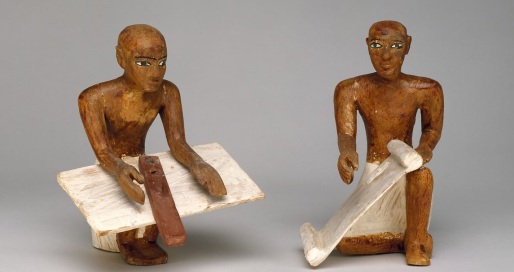Do you teach in primary school (esp. Key Stage 2 / age 8-11)?* If so, please help us out by filling in our little survey below – it will only take a few minutes!
*We are referring here to the UK system, but we very much welcome input from teachers of similar age groups in any country.

Background
The CREWS project involves a group of Cambridge researchers working on new methods of studying writing in the ancient world. We are especially interested in how writing was passed on between different groups of people (often speaking different languages and using writing in different ways), and the social and cultural backgrounds of writing practices (which could vary considerably in different societies – e.g. who could write and what writing was used for).
The history of writing is a fascinating story of multicultural encounters and ‘codes’ to be cracked, and we want to bring this story to a wider audience by producing free teaching materials that can be used in schools without charge. We believe that teaching children about writing in a range of early cultures can become a powerful tool in instilling inclusive, multicultural values in the next generation – but we need your help to make this mission a reality.
We are currently developing funding applications to help us to produce free materials that can be distributed to schools and used in the classroom. To help strengthen our application, we are launching this consultation via the survey at the bottom of this page – please consider taking a few minutes to fill it in to help us achieve this aim.
Our plans
We are trying to work out what sorts of recources we would need to produce in order to enable teachers to deliver a lesson or set of lessons on the ‘history of writing’ (referred to in the survey below as a ‘module’).

We need help to decide how much of what kind of resources to develop. At the moment our ideas include:
- Information sheets for teachers
- Lesson plans (e.g. with ideas on how to allocate time to different activities)
- Information/infographic sheets aimed at the children
- Worksheets (e.g. figuring out a ‘code’, writing your name or a coded message, interpreting the content of a basic ancient document)
- Guidance on how to do a play session (e.g. using modelling clay, papyrus or foil to make a tablet or document like people would have done in the ancient world)
- Short comics or stories
We would also like to organise a workshop and/or online podcast that teachers could watch to help them decide how they can most effectively use our materials in the classroom.

We would very much welcome ideas and suggestions so that we can get this right!
In the meantime, you can also download and try out our ‘write your name’ sheets, which show you how to write your name in a variety of ancient writing systems, HERE. (We have often used these sheets at outreach events to help us teach family audiences about ancient writing – please feel free to distribute them any way you wish.)
CREWS-TEACH SURVEY
You are also very welcome to get in touch with us with more detailed ideas or feedback, and we would very much welcome any offers to try out our materials when we have produced them or to help in other ways. Please see our contact page for other ways of contacting us.

